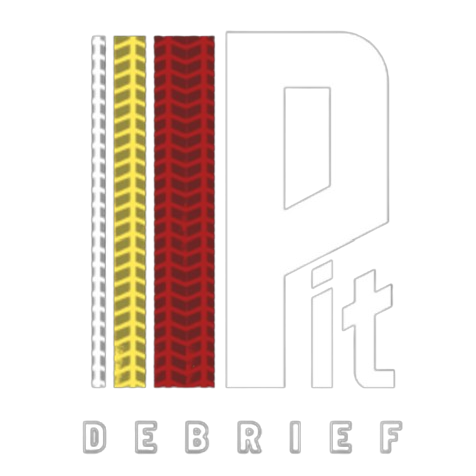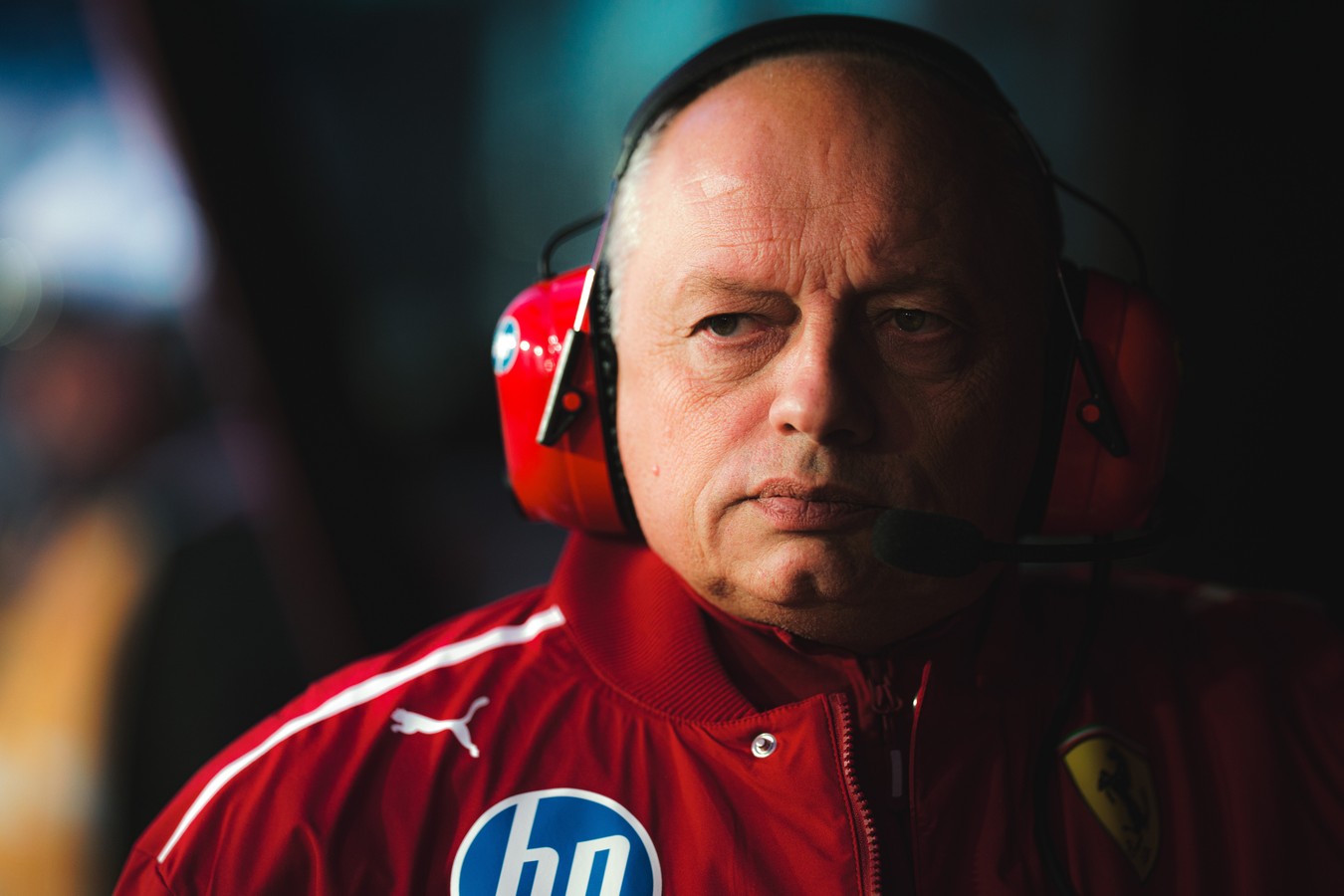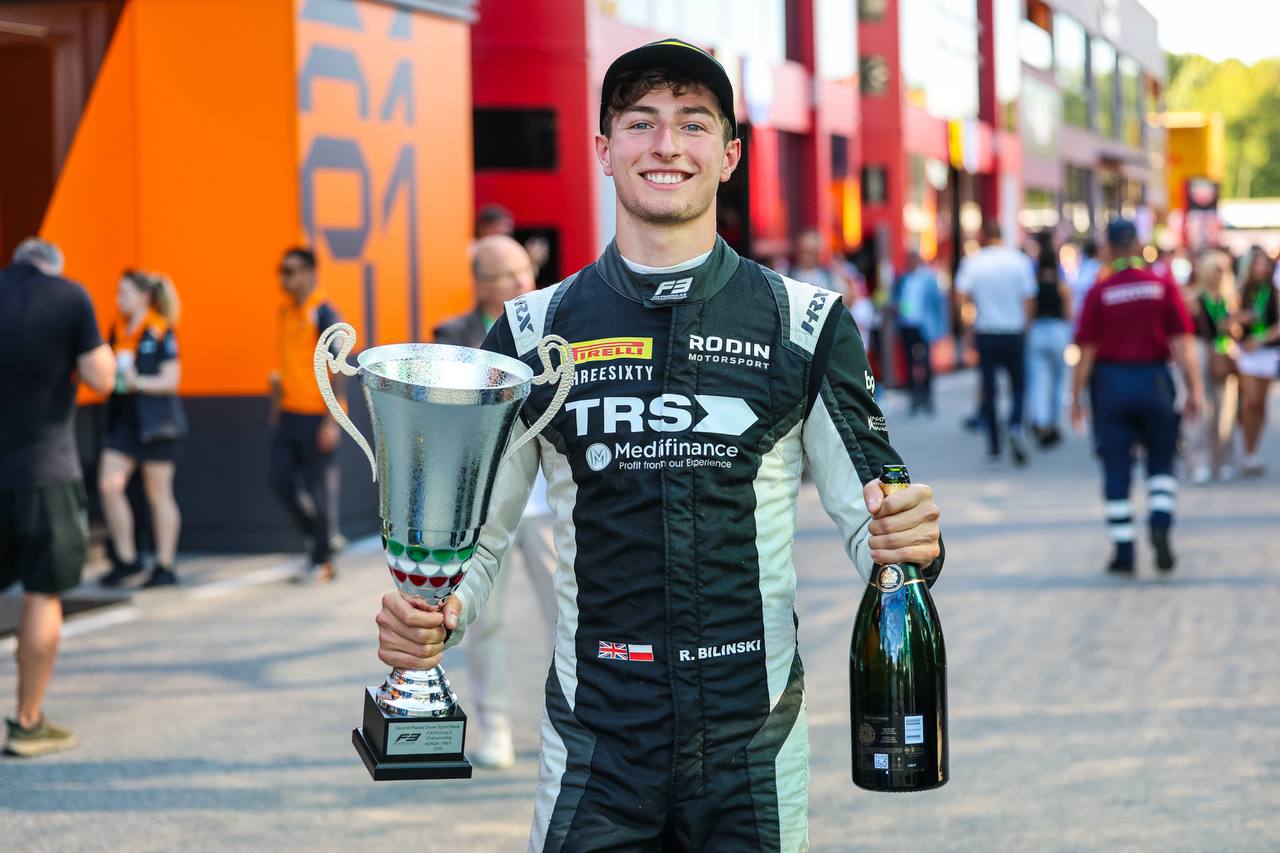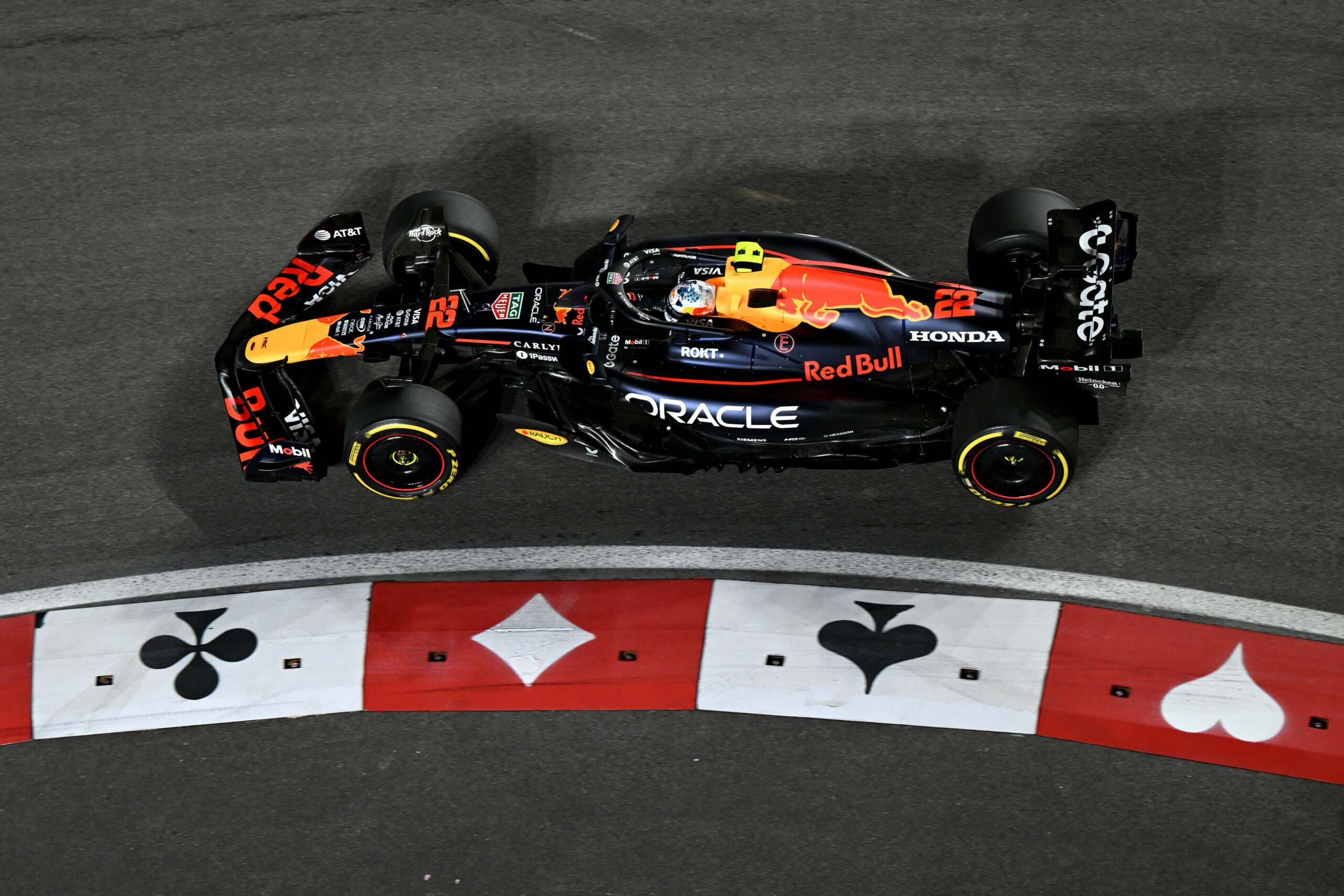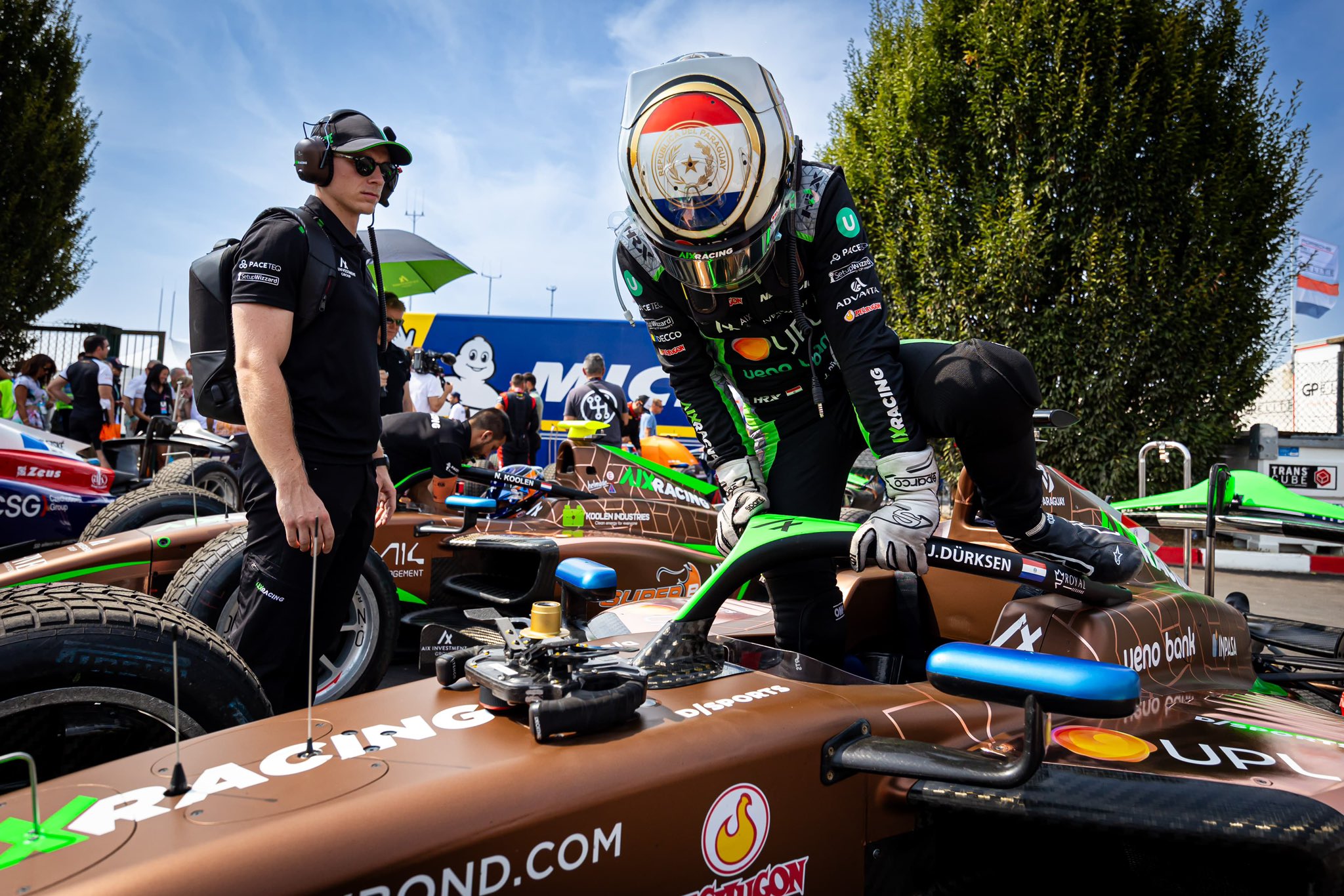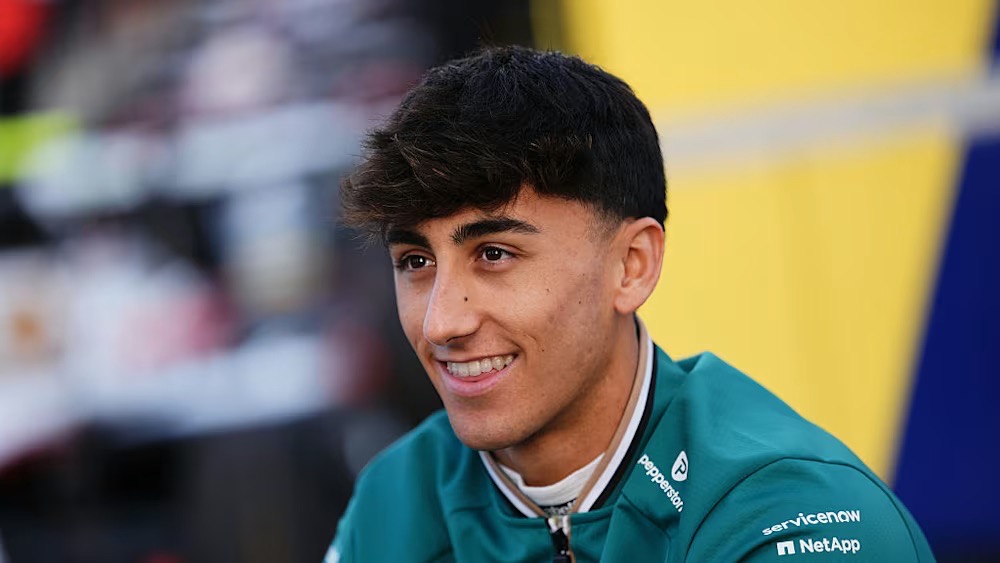Team principal Fred Vasseur has shared his insights into Charles Leclerc’s impressive first stint, the lack of progress on the hard tyres, and Ferrari’s strategy choice as they fell short of the podium yet again, this time at the F1 Las Vegas GP on Saturday.
Starting P9 after struggling in a wet qualifying session, Leclerc’s charge on the yellow-walled tyres included overtakes on Fernando Alonso, Ollie Bearman, Oscar Piastri, and Isack Hadjar in the opening stint.
The eight-time race winner gained track position over Carlos Sainz after boxing for the hardest compound at the end of Lap 24. Unfortunately, Piastri managed to undercut him through the pit stop phase at the Las Vegas Strip Circuit.
Despite challenging the McLaren driver in the second stint, Leclerc initially had to settle for sixth at the chequered flag. He fell 1.9 tenths short of beating Kimi Antonelli, who had received a five-second penalty for a false start.
However, the post-race disqualifications for the McLaren drivers promoted Leclerc to fourth place.
Impact of dirty air and lack of straight-line speed
Speaking in a print media session after the F1 race, Fred Vasseur reflected on the first stint of Charles Leclerc and the factors that hindered his progress in the latter half of the Las Vegas GP.
The Frenchman surmised that drivers experiencing a bit more degradation on higher fuel had allowed Leclerc to execute several overtakes in the early stages of the 50-lap race. Moreover, he elaborated that the 28-year-old no longer had any ammunition once his rivals settled into a steady rhythm and the impact of dirty air started to hurt his tyres.
Referring to Antonelli making a set of hard tyres last almost the entirety of the race, Vasseur also pointed out how clean air enables a driver to extend their stint by a considerable margin.
Additionally, the 57-year-old highlighted the straight-line speed advantage Leclerc’s rivals had over him due to his higher downforce set-up. He explained how the Monégasque couldn’t get past Piastri, who utilised Antonelli’s DRS to keep him at bay.
“I think at the beginning, with the medium we were able to overtake, a bit on the degradation of the others. Yeah, probably [because of] degradation of the others.
“It was much more difficult when the situation was stabilised in the second stint. Also because we did all the stints in dirty air, behind Piastri and Kimi [Antonelli].
“I think the good lesson of the race today is that when you are doing the race in clean air, you can do 47 laps. And when you are not in clean air, you are struggling much more.
“At the end of the day, you know perfectly that when we are running with high downforce for Charles [Leclerc], we are losing 6-7 kph in the straight line. And when we are behind Piastri, we are stuck.”
The reasoning behind Leclerc’s pit stop timing

In terms of Charles Leclerc getting undercut and what Ferrari’s decision-making process was regarding the timing of his pit stop in Saturday’s Las Vegas GP, Fred Vasseur stated that limited long runs during the practice sessions had made them uncertain about the longevity of the different tyre compounds.
As for Mercedes pitting Antonelli early on and significantly extending his second stint, the Ferrari team principal suggested that the Brackley-based squad couldn’t have anticipated this gamble working ahead of the race.
Revealing how the pit wall eventually comprehended that the tyres were more durable than they had expected earlier, Vasseur also conceded that covering Piastri would’ve been the wiser move. Nonetheless, he remarked that it’s easier to make such observations with the benefit of hindsight.
“The issue is that we were not sure about the tyres, as we didn’t long stint the tyres on Friday or Thursday. We were not sure about the life of the tyres and to anticipate the pit stop.
“I’m not sure, and I don’t want to speak for Mercedes, Toto [Wolff] or Kimi. I don’t know if they were expecting to do one stint, or if they were expecting to pit again.
“But it’s true that we realised during the race that we could go longer. And probably if you have to redo the strategy now, you can say, ‘okay, if we stopped a lap before Piastri, it would’ve been better’. But this is always very easy to do after the race.”
